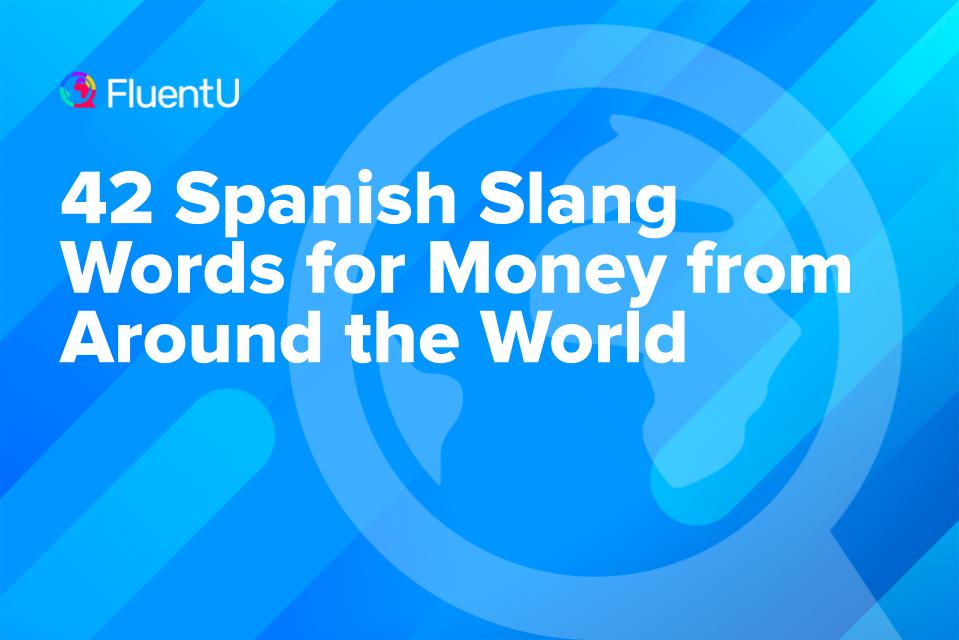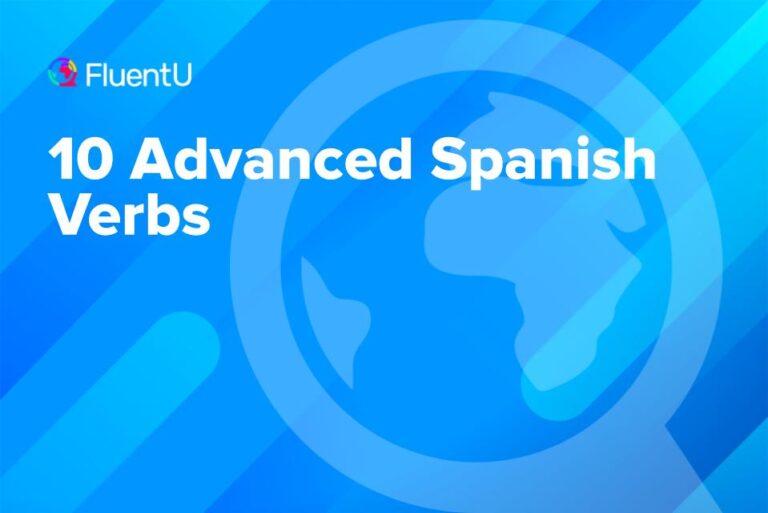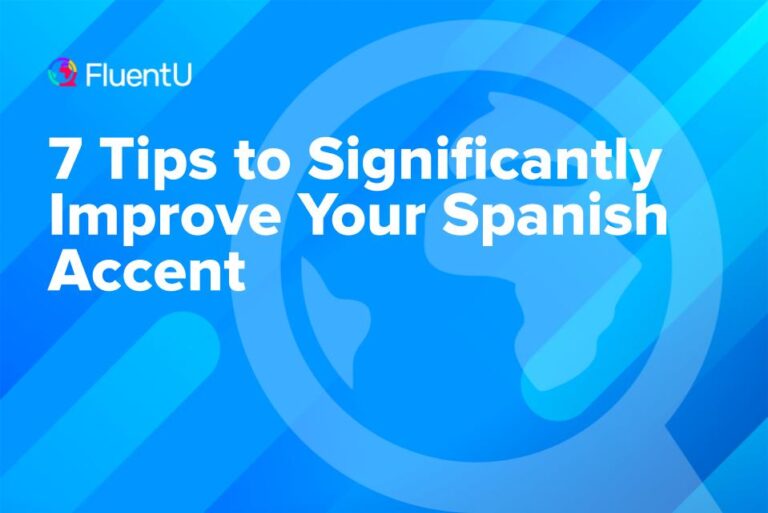Contents
- 1. Pela
- 2. Plata
- 3. Mosca
- 4. Luca
- 5. Chatarra
- 6. Billete
- 7. Pavo
- 8. Lana
- 9. Guitarra / Guita
- 10. Kilo / Quilo
- 11. Moni / Monis / Monís
- 12. Cuartos
- 13. Parné
- 14. Chirola
- 15. Quivo
- 16. Biyuya / Biyuyo / Billuyo / Billullo / Biyullo / Billuzo
- 17. Morlaco
- 18. Harina
- 19. Astilla
- 20. Baro / Varo
- 21. Pasta
- 22. Cushqui
- 23. Papa
- 24. Feria
- 25. Luz
- 26. Marmaja
- 27. Pisto / Pixto
- 28. Morralla
- 29. Chen Chen / Chenchén
- 30. Pirapire
- 31. Jurdel / Jurdeles
- 32. Chimbilín
- 33. Chavos
- 34. Mango
- 35. Gamba
- 36. Palo
- 37. Menudo
- 38. Tolete
- 39. Teca
- 40. Muna
- 41. Maracandaca
- 42. Suelto
42 Spanish Slang Words for Money from Around the World

Did you know that flies, turkeys, shrimps and mangoes are common currencies in some Spanish-speaking countries?
No, I haven’t gone mad—I’m just using Spanish money slang.
If you look up the word “money” in a dictionary, you’ll probably just get the term dinero, though you might even see plata and billete. But with a diverse 21 countries having Spanish as their official language, there’s a huge wealth of slang for this term.
Before we get into all the slang, feel free to check out our story-based lesson on money from our YouTube channel, in case you need a refresher:
Download: This blog post is available as a convenient and portable PDF that you can take anywhere. Click here to get a copy. (Download)
1. Pela
Where it’s used: Spain
Possibly of Catalonian origin, the word pela comes from the verb pelar (to peel). This term is one of the most common ways to refer to money in general in Spain.
It’s normally used in the plural (pelas).
No ha venido porque no tiene pelas. (He hasn’t come because he doesn’t have any money.)
2. Plata
Where it’s used: All Latin America
The word plata (“silver”) is one of the most widespread ways to refer to money, second only to the word dinero itself.
Even people who don’t use this word on a daily basis know its meaning. So, if in doubt, feel free to use it whenever you are in Latin America.
No tenemos plata, güey. (We don’t have any money, man.)
3. Mosca
Where it’s used: Argentina, Chile, Colombia, Costa Rica, Honduras, Mexico, Paraguay and Uruguay
Mosca (fly) is another popular slang word Spanish-speaking people like to use to refer to money.
In Spanish, you can say el dinero vuela (lit. money flies), and from that to calling it a mosca was just a matter of time.
¡Afloja la mosca! (Shell out!)
4. Luca
Where it’s used: Mainly Argentina, Bolivia, Chile, Colombia, Ecuador, Mexico, Peru and Venezuela
This is a very interesting word because, despite referring to money in several countries, you could say it has a different meaning in each of them.
For the purposes of this post, let’s say that if you’re in any of the countries mentioned above, a luca is 1,000 local monetary units (except for Peru, where it means one monetary unit).
It’s even common to hear the expression luca verde (green luca) to refer to 1,000 US dollars.
Préstame cinco lucas verdes, mano. (Lend me five grand, bro.)
5. Chatarra
Where it’s used: Spain
You’ll see Spain quite a lot in this post, but that’s only because the words they use over there are very unique and almost exclusive to the country.
Chatarra means “scrap metal,” so it’s easy to understand why Spaniards call their coins that.
No me des tanta chatarra, Ana. (Don’t give me so many coins, Ana.)
6. Billete
Where it’s used: All Latin America
A billete is a banknote (among other things), and it’s also a super common way to refer to money in general in Latin America.
Préstame billete, loco. (Lend me some money, bro.)
7. Pavo
Where it’s used: Spain
Once again, we have Spain by itself, but I couldn’t resist adding this word to the list.
Pavo means “turkey,” and it’s a term Spaniards use to refer to the US dollar.
Pagó 500 pavos por ese reloj. (He paid $500 for that watch.)
8. Lana
Where it’s used: Mainly Mexico, Panama and Peru
Lana (wool) is a word you might have heard while watching a Mexican telenovela, since it’s one of the terms they use to refer to money.
This is thought to have originated in the era when the wool industry was booming in America. If you had a lot of wool, you were basically a rich person.
No me queda mucha lana. (I don’t have a lot of money left.)
9. Guitarra / Guita
Where it’s used: Argentina, Bolivia, Chile, Costa Rica, Spain and Uruguay
You probably recognize the Spanish cognate guitarra (guitar), but did you know that’s what they call money in Bolivia?
The short form guita is mainly used in Argentina, Chile, Costa Rica, Spain and Uruguay.
No tengo guita, boludo. (I don’t have any money, bro.)
10. Kilo / Quilo
Where it’s used: Cuba and Spain
A kilo is a kilogram, and it has two different meanings when it comes to money.
In Spain, it means one million pesetas (approx. 6,780 US dollars), but in Cuba it means one penny. That’s quite a difference!
La fiesta no me costó ni un quilo. (I didn’t spend a penny at the party.)
11. Moni / Monis / Monís
Where it’s used: Cuba
An obvious borrowing of the word “money,” moni and its forms are mainly used in Cuba.
However, it’s increasingly difficult to find a Spanish-speaking person who doesn’t know the meaning of the term.
Yo no tengo moni, compay. (I don’t have any money, buddy.)
12. Cuartos
Where it’s used: Mainly the Dominican Republic and Spain
The word cuarto means “fourth,” “quarter” and “room.”
It can also be used (normally in the plural form) to refer to money in the Dominican Republic and Spain, mainly.
Se pulió los cuartos en un auto. (He wasted his money on a car.)
13. Parné
Where it’s used: Spain
This is a word that tends to appear quite often in flamenco and sevillanas. So if you’re interested in Spanish folklore music, this one is handy to know.
Parné comes from the Caló language (the language spoken by the Romani in Portugal and Spain), but it’s an accepted word in Spanish.
Mi hermano no tiene parné. (My brother doesn’t have any money.)
14. Chirola
Where it’s used: Argentina
Chirola is an example from the Lunfardo jargon of Argentina, and it refers to low-value coins. It’s often used to describe small quantities of cash, and it’s commonly used in the plural.
¿Me prestás unas chirolas, bolu? (Can you lend me a few coins, bro?)
15. Quivo
Where it’s used: Bolivia
I’ve tried my hardest to research why Bolivians call money quivo, but I haven’t been able to find anything.
Only one thing is certain: It’s pretty much only used in Bolivia.
Nos quedamos sin quivo. (We have no money left.)
16. Biyuya / Biyuyo / Billuyo / Billullo / Biyullo / Billuzo
Where it’s used: Chile, Colombia, Costa Rica, Ecuador, Honduras, Mexico, Uruguay and Venezuela
Biyuyo and company are another popular set of words used to refer to money.
There are almost as many different spellings as countries where they’re used, but they all mean the same thing: Money!
Me quedé sin biyuyo. (I have no money left.)
17. Morlaco
Where it’s used: Argentina, Chile, El Salvador, Mexico and Uruguay
The word morlaco is another Lunfardism that’s used to refer to money in general.
The term started being used to refer to money by low-income immigrants around 1900.
Ese auto cuesta unos buenos morlacos. (That car is quite expensive.)
18. Harina
Where it’s used: Costa Rica
Harina is one of my favorite words in this list. It means “flour,” and it’s mainly used in Costa Rica.
Once again, I haven’t been able to find the reason why this term is used to refer to money, so we can only guess.
Mae, me quedé sin harina. (Bro, I have no money left.)
19. Astilla
Where it’s used: Mainly Cuba (less frequently in Argentina)
An astilla is a splinter.
The DRAE (Royal Spanish Academy Dictionary) includes the expression sacar astilla (to make a profit), which could explain why astilla ended up meaning money in Cuba.
Me quedé sin astilla. (I have no money left.)
20. Baro / Varo
Where it’s used: Cuba, the Dominican Republic and Mexico
The words baro/varo are mainly used in three countries, and they normally refer to a peso.
However, in Cuba, they can also describe a huge sum of money.
¿Me prestas un baro, güey? (Can you lend me a peso, bro?)
21. Pasta
Where it’s used: Cuba, Mexico and Spain (less frequently in Argentina)
If you’re a pasta lover, you’ll be disappointed to know the origin of pasta as a way to refer to money comes from the molten metal paste that was once used to mint coins. Sorry!
Haría cualquier cosa por la pasta. (He’d do anything for money.)
22. Cushqui
Where it’s used: Ecuador
This has to be the most unusual yet most beautiful word on this list.
It comes from Kichwa kullki, which means “money.”
No sé qué hacer con mi cushqui. (I don’t know what to do with my money.)
23. Papa
Where it’s used: El Salvador and Nicaragua
Papa means “potato” in Spanish, which adds yet another food-related word to our list.
The link between money and potatoes comes from when the potato was the main means of subsistence for the indigenous peoples.
If you had a good harvest, you could consider yourself rich.
Ya no queda papa. (There’s no money left.)
24. Feria
Where it’s used: Guatemala, Honduras and Mexico
A feria is a fair or carnival, but it also refers to small change or to money in general.
No tengo feria, mano. (I don’t have any money, bro.)
25. Luz
Where it’s used: Honduras and Nicaragua
Another fun way to refer to money is luz (“light”). However, I haven’t been able to find a single source explaining how this came about. Perhaps it’s from the sparkle of shiny coins?
No traigo luz. (I don’t have any money on me.)
26. Marmaja
Where it’s used: Colombia, Honduras, Mexico and Peru
Marmaja comes from the Greek marmarízō, which means “to shine.”
Again, money is shiny, so I think this one makes a lot of sense!
Rogelito tiene mucha marmaja. (Rogelito has a lot of money.)
27. Pisto / Pixto
Where it’s used: El Salvador, Guatemala and Honduras
A pisto is, among other things, a vegetable fry (all this talk of food is making me hungry!).
It’s also a word you can use to refer to money in El Salvador (where it’s very commonly used), Guatemala and Honduras.
Te gastaste todo el pisto, viejo. (You’ve spent all the money, bro.)
28. Morralla
Where it’s used: Mexico
Morralla literally means “whitefish.” It’s also a word Mexicans use to refer to small change.
Tengo pura morralla. (I have a lot of small change.)
29. Chen Chen / Chenchén
Where it’s used: Panama
In English, cash registers go “ka-ching!”
In Panama, they take the word for that sound and use it to mean money. Neat!
Me quedé sin chenchén, primo. (I have no money left, bro.)
30. Pirapire
Where it’s used: Paraguay
This is another beautiful example of indigenous words and food being incorporated into Spanish.
Pira pire (two words) means “fish skin” in Guaraní. But when you write these two words together (pirapire), they mean money.
No hay pirapire. (There’s no money.)
31. Jurdel / Jurdeles
Where it’s used: Spain
I promise this is the last time I talk about a word you can only use in Spain. But I love non-mainstream languages, and Caló is a great example of one.
Jurdel/jurdeles is a term for money you’ll hear often if you’re interested in flamenco and similar folklore music. The majority of my Spanish students love the topic, so my guess is that you will, too.
Necesito sacarme unos jurdeles. (I need to earn some money.)
32. Chimbilín
Where it’s used: Panama
The word chimbilín comes from chimbil (the fruit of the cereus cactus) and the Spanish suffix -ín.
I haven’t found any reliable source explaining the jump from cactus to money, but my guess is that the transversal cut of a cereus cactus might resemble a coin.
Necesitamos más chimbilín. (We need more money.)
33. Chavos
Where it’s used: Puerto Rico
Every time I hear the word chavo (“child,” “youngster”), the first thing that comes to my mind is Mexico’s El Chavo del Ocho.
However, this word has nothing to do with the sitcom or children in Puerto Rico, since it’s a synonym for money.
No tengo chavos. (I don’t have any money.)
34. Mango
Where it’s used: Argentina, Chile, Peru and Uruguay
Mangoes are delicious but the word mango with the meaning of money doesn’t come from the fruit but from the Lunfardo term marengo, which probably refers to a coin minted after Napoleon’s victory in the Battle of Marengo.
No tenemos un mango. (We don’t have any money.)
35. Gamba
Where it’s used: Argentina, Chile and Uruguay
We add another food word to the list with gamba, which is Spanish for “shrimp”.
When it comes to money, it’s commonly used to refer to a 100 pesos note.
This is because there was once a 100 pesos note in Chile that was the color of a cooked shrimp!
Préstame gamba, pana. (Lend me some money, bro.)
36. Palo
Where it’s used: Argentina, Colombia, Panama and Peru
Palo primarily means a stick, a club or a pole.
It’s also a word that’s used in a couple of Spanish-speaking countries to refer to one million pesos.
If you add the word verde (green) at the end, it refers to a million dollars.
Me costó tres palos. (It cost me three million pesos.)
37. Menudo
Where it’s used: Costa Rica, Cuba and Puerto Rico
Generally speaking, something menudo is something small.
This might explain why menudo refers to small change in a couple of countries.
Necesito menudo para la guagua. (I need change for the bus.)
38. Tolete
Where it’s used: Cuba and the Dominican Republic
This one’s quite a dangerous word.
Tolete means “oarlock/rowlock” literally.
If it’s used in Cuba and the Dominican Republic, it can mean “peso.”
If you use it anywhere else (or even in these two countries depending on the context), it’ll mainly mean “male reproductive organ.”
Préstame 5000 toletes. (Lend me 5,000 pesos.)
39. Teca
Where it’s used: Argentina and Uruguay
Teca means teak in Spanish, and it’s mainly used in the Montevideo area.
It’s not completely clear why this word started to refer to a sum of money, but one of the theories is that it comes from the Lunfardism tela, which also refers to money.
No tengo teca para viajar a Montevideo. (I don’t have any money to travel to Montevideo.)
40. Muna
Where it’s used: Venezuela
There isn’t a clear explanation as to why muna started to be used to refer to money.
My personal theory is that it comes from the verb munir, which means “to provide with something.”
Dale sus munas. (Give him his money.)
41. Maracandaca
Where it’s used: El Salvador and Nicaragua
The word maracandaca possibly comes from the word macaco, which was one of the first coins in Central America.
Nowadays, it normally refers to money in general in El Salvador, and to a córdoba in Nicaragua.
¿Dónde están las maracandacas? (Where’s the money?)
42. Suelto
Where it’s used: Ecuador and Spain (less frequently in Mexico)
Something suelto is something loose or untied. That’s probably how this came to be another word to refer to small change.
No tengo suelto. (I don’t have any change.)
Phew! That was intense!
With so many ways to refer to money, you’ll know exactly which slang word to use in each Spanish-speaking country.
And now start saving that plata and studying some more Spanish for your next trip.
Stay curious, my friends, and as always, happy learning!







